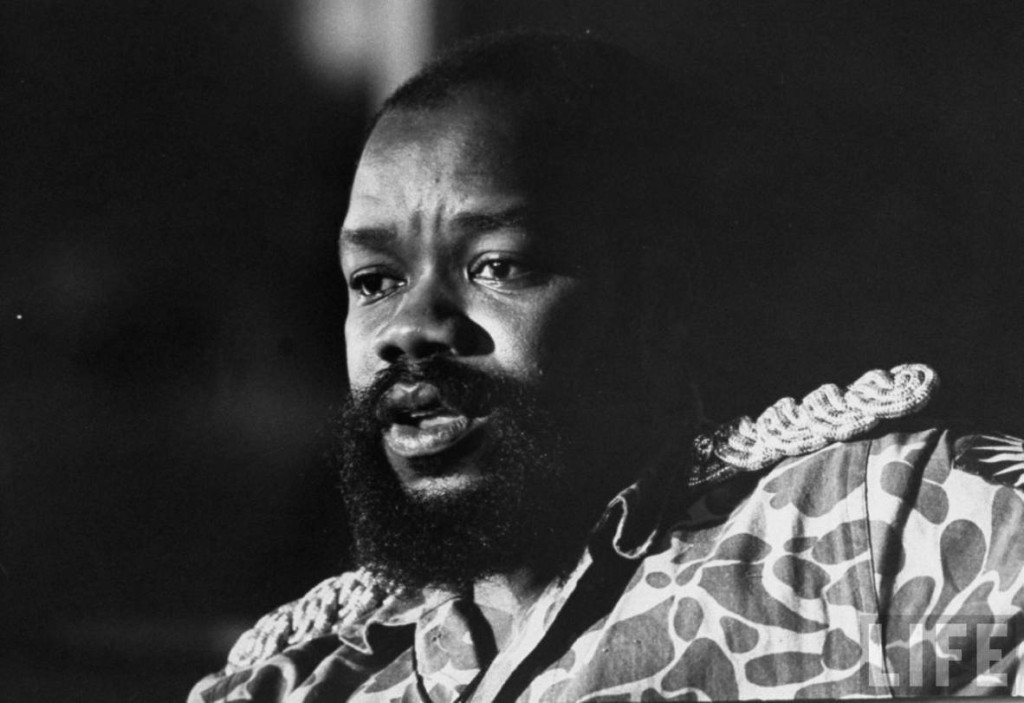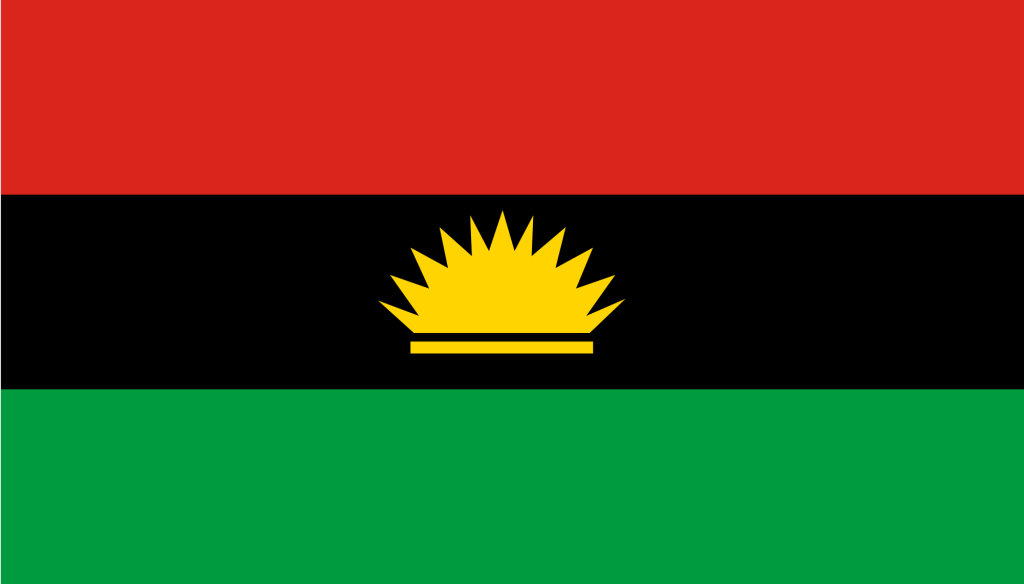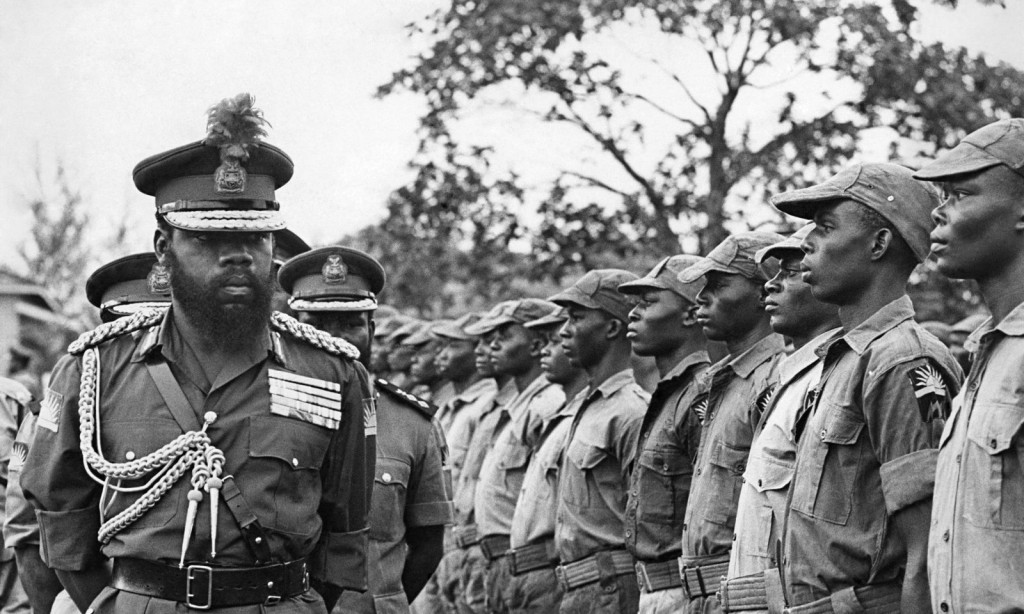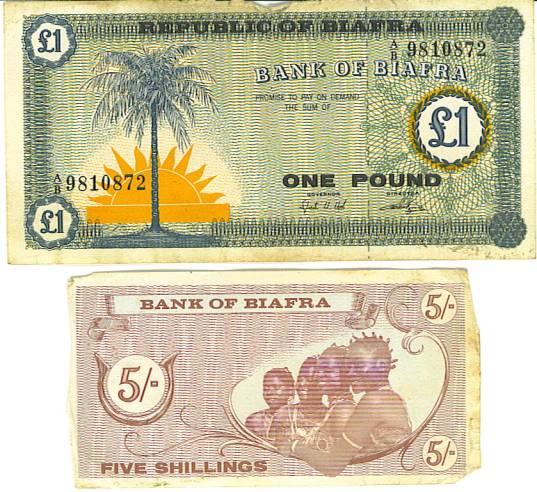Some causes of the Nigerian Civil War are ethno-religious riots that occurred in the north, a military takeover, and the attempt to form the Biafra Republic in the southeastern provinces that Igbo people primarily inhabited. Its impacts include but are not limited to displacement of citizens, fatalities, serious damage to both adults and kids and severe malnutrition.
The Nigerian Civil War, also known as the Biafran War, July 6, 1967 – January 13, 1970, was an ethnic and political conflict fought between the federal government of Nigeria and the Republic of Biafra, caused by the attempted secession of the southeastern provinces of Nigeria as the self-proclaimed Republic of Biafra.
The conflict was also the result of economic, ethnic, cultural and religious tensions mainly between the Hausas of the north and the Igbo of the east of Nigeria. Over the two and half years of the war, 1 million civilians died from famine and fighting. The ensuing battles and well-publicized human suffering prompted international outrage and intervention.
10 Lesser Known Facts of the War

1. Background Of The Nigerian Civil War
Also known as the Biafran War, the Nigerian civil war began in July 1967 and ended in January 1970. The war was a political and ethnic conflict that occurred when the Nigerian Eastern region proclaimed itself as the Republic of Biafra.
2. Causes Of The Conflict
The main causes of the conflict were religious, cultural, economic and ethnic tensions between the Igbos who are from the eastern part of Nigeria and the Hausas who are from the northern part of Nigeria. Through the time of the war, many civilians died either by fighting or through starvation.
3. Secession Of The Republic Of Biafra
On 30 May 1967, Colonel Odumegwu Ojukwu who was the military governor of the southeast part of Nigeria proclaimed the secession of that part of the country as an independent nation to be called, The Republic of Biafra. However, this new nation was considered weak as it had a great shortage of weapons for war. In addition, the new republic was not recognized around the world say for only five countries among them, Gabon, Haiti, Zambia, Tanzania and Cote d’Ivoire. Peace accords such as the Aburi Accord collapsed and the Nigerian civil war ensued.

4. Police Action By The Nigerian Government and Formation Of The First Infantry Division
The government of Nigeria launched a police action which was to take back the secessionist territory. On 6th July 1967, federal troops from Nigeria advanced to Biafra in two columns. Colonel Shuwa led the Nigerian army through the north of Biafra. There, the first infantry division was formed by the local military units.
The left-hand column went after the town of Garkem and captured it on July 12th while the right-hand column made for Nsukka town that fell on July 14th. At this point, the other parts of Nigeria considered the war to be a confrontation between the Eastern region and the Northern region.
5. Response From Biafran Forces
On 9th August, Biafran forces led by Colonel Banjo responded and moved west to the mid-west part of Nigeria crossing the Niger River and passing through the city of Benin. On 21st August, the Biafran forces were stopped when they reached Ore which is presently the state of Ondo. The mid-western region was easily taken over due to the little resistance they met.
6. Second Infantry Division
In response to this attack, General Gowon asked Colonel Murtala Mohammed to form the second infantry division whose aim was to rid the mid-west region of the Biafrans and defend the western side. On 22nd September, the city of Benin was retaken by Nigerians.

7. Third Infantry Division
The third infantry division was formed under Colonel Benjamin Adekunle. Through it, an offensive was launched into Biafra south by General Gowon. Throughout the war, thousands of lives were lost for instance, when the Nigerian soldiers who were under Colonel Murtala Mohammed captured Asaba, a mass killing of seven hundred civilians was carried out.
The Calabar town was invaded on 17 October 1967 by Nigerians led by Colonel Benjamin Adekunle while on the other hand, Biafrans were led by Colonel Ogbu Ogi who controlled the Lyyn Garrison and the areas between Opobo and Calabar. The Biafrans were under heavy attack and eventually withdrew from battle and Colonel Ogbu Ogi surrendered to General Benjamin Adekunle.
8. Stalemate State Of The War
In 1968 and after that, the war was in a stalemate state since the Nigerian forces could not make significant advances into the areas that were still under Biafran control since they faced strong resistance and had gone through major defeats in areas such as Arochukwu, Umuahia, Onne, Oguta, Abagana and Ikot Ekpene.
Between April and June 1968, another offensive from Nigeria surrounded the Biafrans and the Port of Harcourt was captured on 19th May 1968. This led to widespread civilian starvation within the besieged areas. With the claim by the Biafran government that the Nigerians were using genocide and hunger to win the war, they pleaded for aid from other countries around the world.

9. Surrender Of Biafrans and Victory Of Nigerians
On 23rd December 1969, a final offensive was launched against the Biafrans by the federal forces of Nigeria who had increased support from the British. Owerri and Uli which were both Biafran towns fell on 9th and 11th January 1970 respectively. The Biafran leaders surrendered to General Yakubu Gowon on January 13th, 1970. A few days later, the war ended as the Nigerian forces advanced to the Biafran territories that remained.
10. Effects Of The Nigerian Civil War – About 3 Million People Died
It is approximated that close to three million people lost their lives as a result of the Nigerian civil war with most of them having died from diseases and hunger. Despite the effort to reconstruct the nation, religious and ethnic tensions are still present in the politics of Nigeria. For many years in Nigeria, the military government was in power.
Frequently Asked Questions
What Caused the Nigerian Civil War?
The underlying reasons for the Nigerian civil war were the ethno-religious riots that occurred in the north, a military takeover, and the attempt to form the Biafra Republic in the southeastern provinces that Igbo people primarily inhabited.
The war lasted from 1967 to 1970.
Who Won the Nigerian Civil War?
The Nigerian government emerged victorious at the conclusion of the Nigerian Civil War and Biafra, the secessionist state, was reintegrated into Nigeria. The armed struggle lasted for 30 months.
How many People were killed in the Nigerian Civil War?
It is estimated that somewhere between 500,000 and 3 million people lost their lives during the Nigerian Civil War. A significant portion of these deaths occurred in the Biafran territory as a result of starvation, combat, and ethnic cleansing.
How did the Nigerian Civil War End?
The Nigerian Civil War was brought to an end when General Yakubu Gowon, the leader of the Nigerian Federal Military Government, agreed to the offer of peace from General Odumegwu Ojukwu, the head of the Republic of Biafra. This happened on January 15, 1970. The Biafran leadership eventually yielded to the Nigerian government, and the military government declared a situation of “no victor or vanquished”.
What Happened to Ojukwu after the Civil War?
Ojukwu was allowed to come back to Nigeria without any political punishment in 1981 following the democratic election of Shehu Shagari as Nigerian president. He returned to the country in 1982 and subsequently became part of the National Party of Nigeria in January 1983. He passed away at the age of 78 in 2001 in London, England.
What were the Consequences of the Nigerian Civil War?
The Nigerian civil war had far-reaching impacts, including displacement of citizens, fatalities, serious damage to both adults and kids, severe malnutrition, destruction of public structures, and depletion of physical and social resources. Following the war, the Igbos had to start from the ground up with minimal resources.
